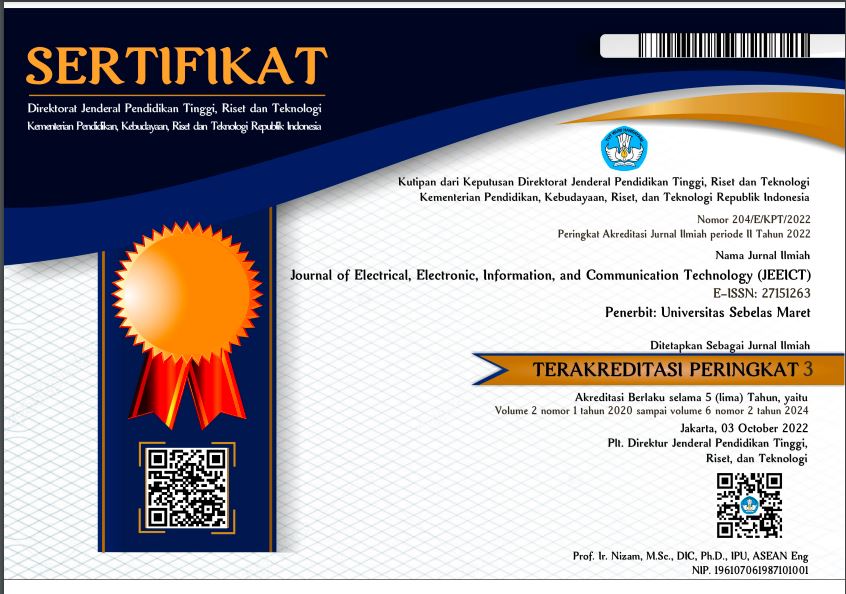Design of Automatic Watering and Humidity Systems Based on Internet of Things for Screenhouse
Abstract
Central Bureau of Statistics reports that the population in Indonesia continues to increase every 10 years. The more the population swells, the greater the need for food. To meet the community's need for food availability, there are several agricultural obstacles such as growth criteria that are not by the type of commodity. Air temperature, humidity and intensity of water supply are included as criteria for plant growth (Budiman and Saraswati, 2005). Erratic weather changes make farmers unable to guarantee production results with good quality, and quantity. This research is designed using a tool that has been integrated with the Internet of Things system embedded in a raspberry pi as the overall processing core [1]. In addition to the raspberry pi, there are also several sensors as real condition readings, several relays as an electric pump controller and a solenoid valve as an electrical faucet controller, and these components will be connectedwith the ESP8266/NodeMcu module using a wifi connection. The data read by these sensors is displayed on the smartphone screen as a monitoring function in real-time and also the user can directly take action using the remote control, both automatic actions using machine learning or manual action.This sophisticated screenhouse can perform irrigation actions and temperature regulation automatically without having to do direct monitoring every time. The use of this system in agriculture allows the owner to not need to do direct monitoring by coming to the screenhouse, users can simply monitor using a smartphone connected to the Internet network.The application of this system can carry out watering actions and regulate the temperature in the screenhouse room automatically according to the aspects of good growth criteria for plants. Like controlling the microclimate in the screenhouse.
Full Text:
PDFRefbacks
- There are currently no refbacks.







